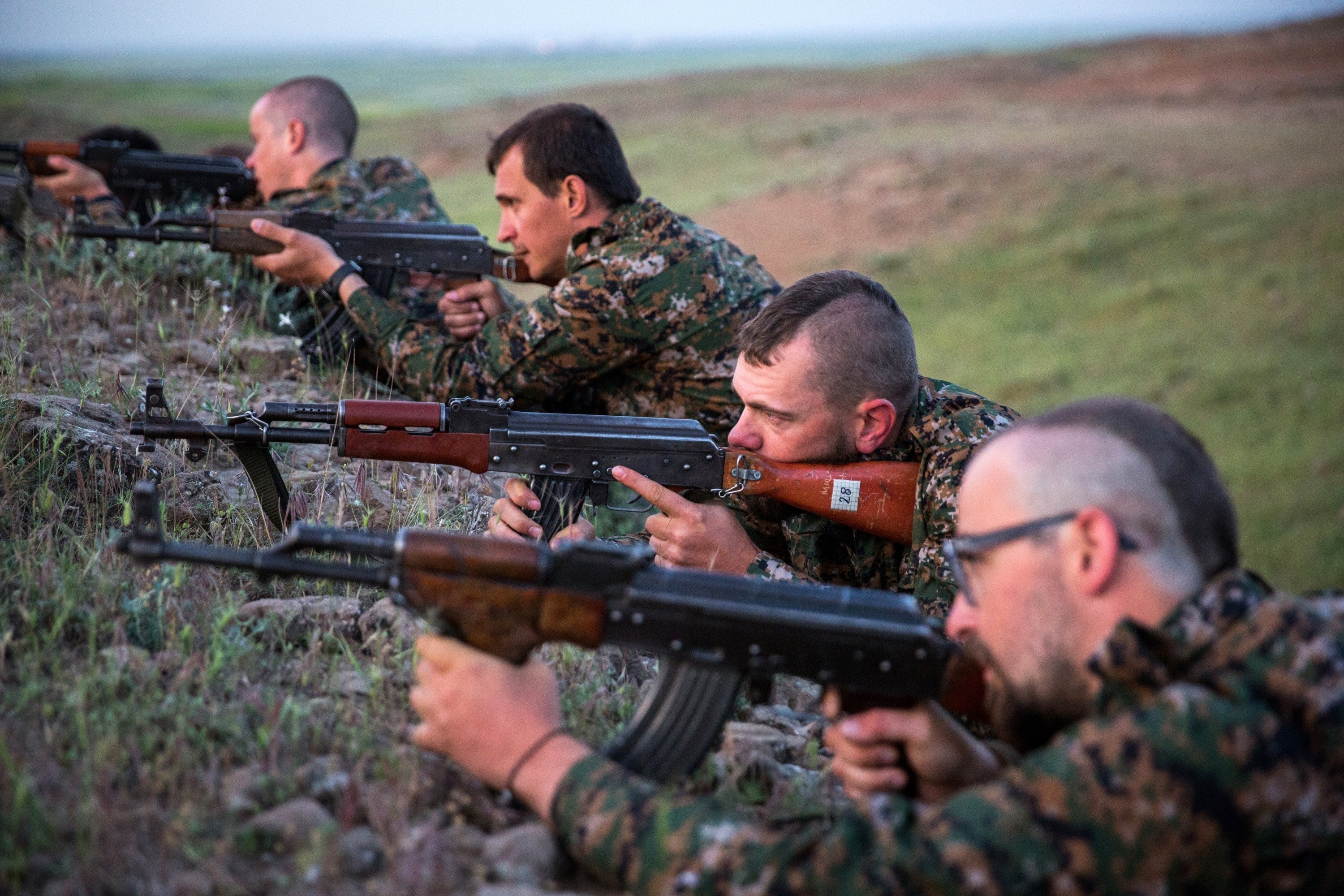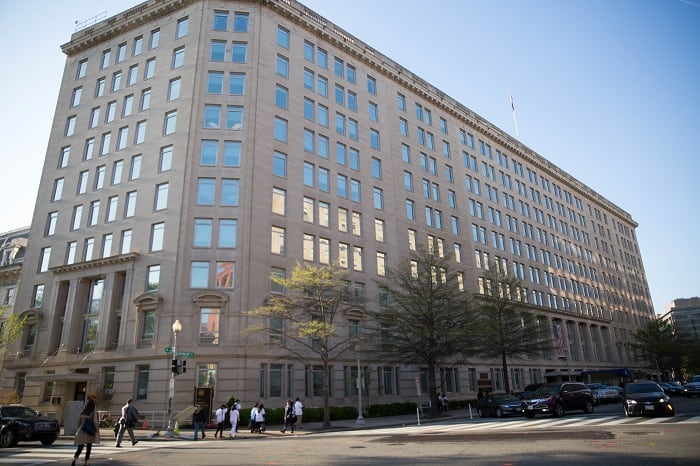WASHINGTON —The Defense Department's fiscal 2018 budget request continues the program of training and equipping vetted Syrian partners in the fight against ISIS, and the proposal includes funds for U.S. AT-4 anti-tank rockets or Russian SPG-9 recoilless rifles, and several thousand RPG-7s, a move likely to irk U.S. NATO ally Turkey.
The budget request provides a small window into the Trump administration's secretive strategy to defeat ISIS. Defense officials have been reluctant to divulge information on the overall strategy for post-ISIS Iraq and Syria, but the document offers a glimpse into areas the administration views as the primary points of concern not only for taking the fight to ISIS in Syria, but also rebuilding combat power in Iraq to fight a potential post-ISIS insurgency in that country.
The Pentagon has been tight-lipped about the specifics of the equipment it plans to provide to its Kurdish allies. Those concerns likely stem from Ankara's disapproval of U.S. plans to equip members of the Kurdish People's Protection Units, or YPG — a group Turkey insists is the Syrian branch of the Kurdistan Worker's Party, an internationally designated terrorist group.
"The equipment includes small arms, ammunition, heavy machine guns and weapons capable of defeating specific threats that forces are expected to encounter as they take the fight to the enemy, such as heavily armored vehicle-borne IEDs," said Eric Pahon, a spokesperson for the Pentagon. He declined to provide any further specifics on weapon types.
But in early May, the White House announced it was moving ahead with a plan to arm the Syrian Democratic Forces — which includes the YPG and other Kurdish factions — a group Washington views as a capable ally in the fight against ISIS.
"The SDF, partnered with enabling support from U.S. and coalition forces, [is] the only force on the ground that can successfully seize Raqqa in the near future," Pentagon spokeswoman Dana White told NBC NewsTuesday, referring to the Syrian city that is the capital of ISIS' self-proclaimed caliphate. And it has begun receiving the equipment it needs, White confirmed.
The budget document, "Justification for FY 2018 Overseas Contingency Operations / Counter-Islamic State of Iraq and Syria Train and Equip Fund," is more detailed than last year's proposal, and likely shows the types of equipment that the U.S. government is already starting to provide with 2017 appropriations.
U.S. officials in Baghdad argue the gear will be issued on a need-by basis, meaning, as missions change, the Kurds will receive the necessary weapons and gear to meet the next obstacle, a policy aimed at allaying the concerns of Turkey that those weapons will be pointed toward Ankara after ISIS falls.
However, the Defense Department’s request for FY18 includes an unusually detailed list of equipment:
- 6,000 PKM machine guns
- 3,500 DShK heavy machine guns
- 3,000 RPG-7s
- 1,000 AT-4s or SPG-9 recoilless rifles
- 80 60mm mortars
- 80 82mm mortars
- 75 120mm mortars
The list also includes more than 300 non-tactical vehicles, 60 nonstandard vehicles, and 30 earth moving vehicles to assist with the construction of outposts or operations staging areas.
The request does not detail which vetted Syrian groups will receive certain pieces of equipment — the U.S. has numerous partners in Syria assisting with the fight against ISIS, not just Kurds. In northern Syria there is the SDF, the YPG, and Syria Arab Coalition — a group of Arab fighters incorporated into the SDF. Operating in the southeastern part of Syria, out of a small outpost at the Tanf border crossing with U.S. and U.K. special operators are the Maghawir al-Thawra and Shohada al-Quartayn, groups that formerly fought against the Assad regime.
The FY18 request is large enough to sustain 25,000 Syrian fighters "while training and equipping an additional 5,000 to liberate, secure and defend territory previously controlled by ISIS," according to the budget document.
The arming of Kurdish militants with anti-tank rockets is a sensitive topic because of Turkey’s reliance on its armored Leopard tanks in its fight against ISIS in northern Syria, and its struggle against the Kurdish factions it views to be terrorist groups.
During the nearly three-month Turkish assault on the ISIS-held city of Bab in December, Turkish forces lost nearly 11 tanks, three infantry fighting vehicles, and an armored personnel carrier, mostly to anti-tank weapons captured by ISIS fighters, according to an investigative report compiled by Bellingcat, an open source investigative journalism platform founded by Eliot Higgins, a senior fellow at the Atlantic Council.
Anti-tank weapons are prolific across the Syrian battlefield. They include U.S., Russian, and Chinese TOW guided-missile systems, according to Pieter Wezeman, an expert in arms control at the Stockholm International Peace Research Institute.
U.S. arms and equipment to SDF and YPG fighters began to trickle in last night. According to a couple of YPG commanders that Military Times was able to reach, that equipment so far has consisted only of vehicles.
Included in the budget request are also 150 AN/PVS 7b night vision goggles and 150 rifle-mounted AN/PEQ 2 infrared lasers, which are used to aid in targeting and aiming during night time operations. Military Times reported in April that a YPG commando force was equipped with U.S. older generation night vision and rifle-mounted lasers, prior to Defense Department approval to supply the Kurdish faction. The Pentagon denies supplying the equipment.
The FY 18 budget request for training and equipping vetted Syrian fighters is approximately $500 million, roughly $70 million more than last year. The U.S. has ramped up its anti-ISIS operations in Syria as America’s Kurdish allies have come within a few kilometers of Raqqa. The Kurdish-led fighters recently captured the north end of the Baath Dam, the last vehicle crossing point across the Euphrates River for ISIS fighters fleeing Raqqa, according to officials at U.S Central Command.
Shawn Snow is the senior reporter for Marine Corps Times and a Marine Corps veteran.




